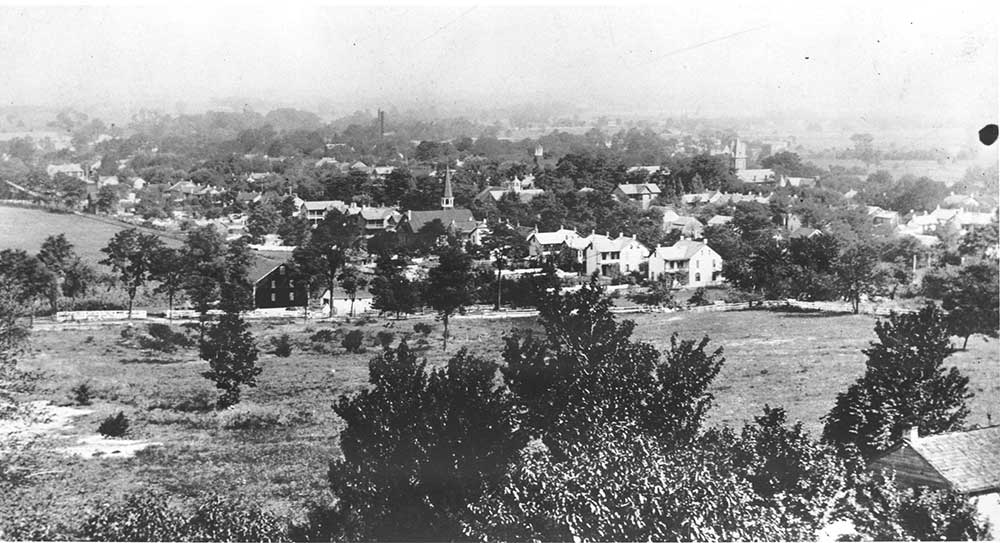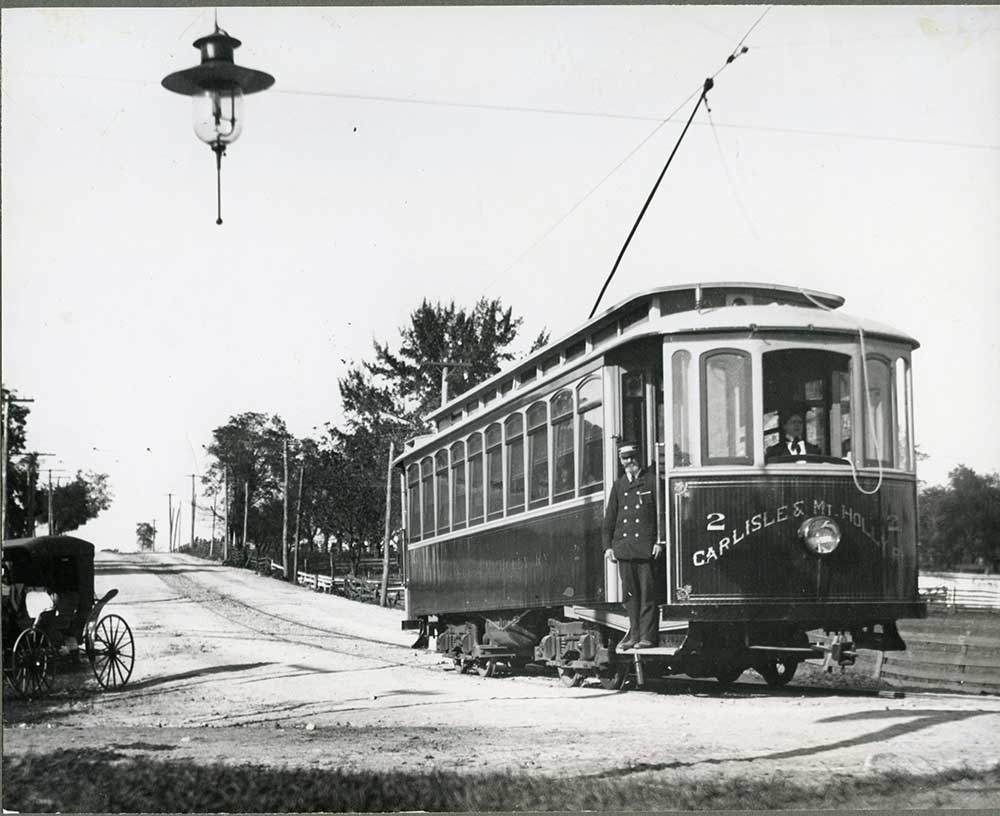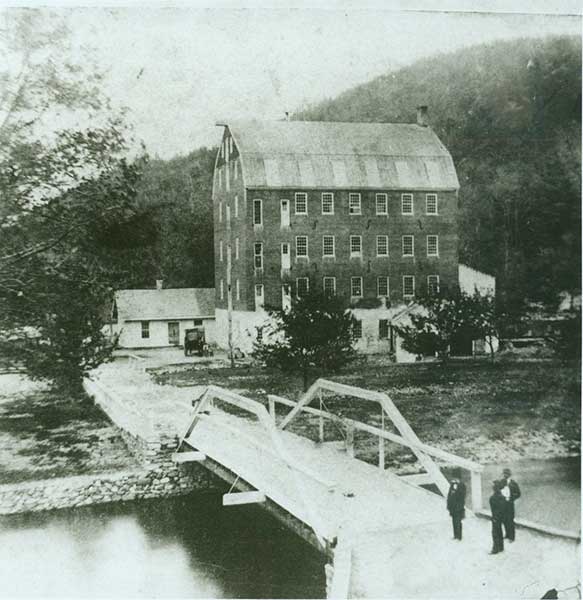Mt. Holly Springs is situated at the northern entrance of a gap in South Mountain in Cumberland County, Pennsylvania. Mountain Creek flows through this gap and into the borough. This area was once called Holly Gap because of a large holly tree that grew there. The area along Mountain Creek was also known at various times as Trent's Gap, Papertown and Kidderminster. In the original plan of the borough, in 1815, it was called South Middleton.1
This community grew in the late eighteenth and early nineteenth centuries because of the iron industry. Production of iron at that time required a source of iron ore, running water to provide power for the forges and the bellows of an iron furnace, limestone to act as flux separating the metal from surrounding stone, and an abundant supply of timber that could be made into charcoal to fire the furnaces. The area near Holly Gap provided all four essential requirements, and an iron furnace was built before the Revolutionary War. For decades that iron furnace was the major employer in the area, but paper mills were built further downstream as early as 1812, and by the mid-1800s, the transition from the iron industry to the production of paper as the major source of employment was complete. In 1855, the abandoned iron furnace was torn down, and a paper mill was built at that site.2
The tradition that cannon were made in Mt. Holly Springs before the Revolutionary War can be found in many sources. In actuality, this particular “fact” is unfounded and has been documented as folklore, rather than history, since the following was printed in The Sentinel in 1891:
Apropos to the alleged manufacture of cannon, Major Samuel Givin now residing in Carlisle, but for many years living in Mt. Holly Springs, and who is one of the best versed men in the traditional history of that town said, "Previous to the Revolution the English government decided to erect a boring mill for the purposes of making cannon in the gap, near the gate. They built a house and had placed in it a portion of the water machinery and tools when war was declared. Of course this put a stop to all operations and in time the building was destroyed. Work had not progressed sufficiently for the government to make any guns, and it can be safely said that there never was a cannon made there."3
About 1827, a water-powered weaving mill owned by Samuel Givin produced carpets in this area. Many people considered the beautiful design and texture of those carpets to be equal to similar carpets produced in mills in Kidderminster, England, and that part of the community became known for a time as Kidderminster.4 Eventually that mill began to produce paper as did other mills along Mountain Creek, and for a time this community was known as Papertown. The area was incorporated as a borough in 1873 with its present name of Mt. Holly Springs.5
The water-powered paper mills are gone, but one distinctive feature from that industrial era remains: the Amelia S. Givin Free Library on Baltimore Ave. It is the oldest library in Cumberland County and was built in 1889 with funds provided by Amelia Steele Givin, the daughter and niece of paper mill founders, Robert and Samuel Givin.6
At the beginning of the twentieth century, Mount Holly Park was a popular destination for picnics and dances in the pavilions along the creek and near a lake that was formed by a dam across the creek. A trolley line ran from Carlisle to Mt. Holly Springs from 1901 to 1930, and during those decades, many county residents rode the “Holly Trolley” in order to spend leisure time at the scenic creek-side park. A mountain spring near the park was used for years by people who believed its waters were beneficial for a variety of ailments. Currently, the Mount Holly Marsh Preserve offers a hint of what the long-gone pavilions provided. A hiker on the trails in the 200 acres near Mountain Creek that are managed and protected by Nature Conservancy7 won't find trolleys, picnic pavilions or organized dances, but there is a sense of peace and escape from the stresses of the twenty-first century that is similar to the joys visitors once found at Mount Holly Park.



